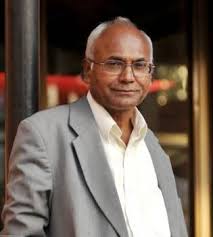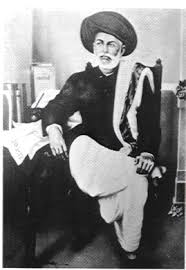
Some weeks ago, sometime around the eve of Diwali, a friend of mine
posed a question that would have made proud the masters who crafted the
Agamas
and
Dharmashastras. ‘At what time is it’, he asked, ‘that the
Narakasura, whom
we consign to flames on the eve of Diwali, becomes a Narakasura?
Is it when the
head-mask is put on? Or when the lights are put on? Or is it when the music
starts? Or the moment the frame is made? Is there a specific moment?’
Continuing in this Agamic tradition, a friend of his opined that the real
moment should actually start, when the effigy of the Narkasur is burnt down and
the Diwali lamps are lit up. At the same time however, this respondent lamented
that nowadays, we concentrate more upon creating Narkasur (the symbol of evil)
than that quintessential mark of the Goan Diwali, the Akashdivo.
 |
| Kancha Ilaiah |
When
lamenting this inversion of the ‘traditional’ rules of the Diwali celebrations
however, this contemporary Agamist may have grabbed the wrong end of the stick.
Take the example of the public Ganesh festival, which has come a long way from
the time of its invention by Lokmanya Tilak, and is today marked by loud
film-music and often by drunken young men dancing to these popular tracks.
While the poor Lokmanya must be turning in his grave, the contemporary
intellectual Kancha Ilaiah has suggested that these trends, rather than being
lamented should be seen as the Dalitisation of the Ganesh festival. Ilaiah’s
argument would be that while Tilak’s public festival was intended to
consolidate the population along nationalist, brahmanical, and thus elitist
lines, the trend otherwise so lamented, should be seen as a populist correction
of this trend.
In other parts of the country,
the Dalitisation, or de-brahmanisation, of popular Hindu festivals has
proceeded apace along rather different patterns. This trend has been led by Dalit student
organisations who have argued that the myths surrounding Hindu gods and goddess
and their festivals are in fact symbolic representations of the history of
'upper' castes’ domination over the indigenous population of the country – SC,
ST and OBCs. To correct this history,
they therefore re-interpret these events from a Bahujan perspective. Thus for
example, the members of the All India
Backward Students Forum (AIBSF) in the JNU campus in Delhi suggested
that Dussehra was in fact a celebration of the killing of the Sudra king
Mahishasa by the upper-caste woman Durga.
Similarly on the campus of the Osmania University, on the eve of Diwali,
some students cast Naraka Chathurdashi as “Narakasura Vardhanti,” the death
anniversary of Naraka. They reinterpreted the event as commemoration of the
killing of the Dalit hero Naraka by the brahmanical figure Krishna, who killed Naraka
to suppress the revolt by Dalits against upper castes. Arguing that the Asura was appended to a name
to demonise the character, Narakasura was now called “Naraka Shura”. In this
reworking of the name, Naraka remains the name of entity, while the Asura is cast
away to make Naraka a Shur-Vir, or
brave warrior.
The event at the JNU campus not
surprisingly, did not go down well. Upper-caste students taking offense to this
inversion and demonization of brahmanical deities assaulted the students of the
AIBSF. This sort of confrontational violence has not been universal however,
and the modern history of Kerala and the Onam festival is perhaps an
interesting example.
 |
| Mahabali returns to Kerala |
Most people today, both within
Kerala and without, see the festival of Onam as the moment when the mythical
king Mahabali returns to his former realm, thanks to a final boon by the
Vishnu’s Vaman avatar, to check on the well-being of his subjects. It is to
welcome him and reassure him that all continues to be well, that Onam is
celebrated with pomp and style. Writing on the historical evolution of this
festival however,
J. Devika argues that ‘Onam used to be, in many parts of
Kerala, … more a celebration of Vishnu, rather than Maveli — Mahabali — and
domestic rituals associated with Onam celebrated not Mahabali but Vamanamurty.’
She points out that a different interpretation of Onam was forged ‘in the
decades in which the movement for uniting Malayalam-speaking regions into
Kerala gathered force, one in which the left was certainly a hegemonic
presence. Brahmanical mythology according to which Kerala was founded by
Parasurama the warrior sage was insistently attacked by left-leaning and
anti-caste intellectuals …who launched a scathing attack against the setting up
of a depiction of Parasurama outside the venue of the Aikya Kerala Conference
in the 1940s.’ As in the case of Goa, Puranic legends cast Parashurama as the
mythical creator of Kerala, and clearly, the Aikya Kerala movement, set up to
consolidate the Kerala state was seeking to draw on this origin myth to create
a popular history for the nascent Kerala
sub-nation. As a result of this attack, Onam was converted from a festival
focused on the Vaman avatar, to a celebration of the benevolent asura king
Mahabali, an idea that was spread in school text books, and through them into
popular imagination.
 |
| Mahatma Jotiba Phule |
This overturning of the Mahabali-
Vaman avatar relationship however, has a much longer tradition than that involved
in the consolidation of Malayalam speaking territories into the State of
Kerala. This tradition can be said to date back to the efforts of the 19
th
century philosopher and social reformer Mahatma
Jotiba Phule. In a recent book,
The World of Ideas in Modern Marathi: Phule,Vinoba, Savarkar, G. P. Deshpande points out that Phule contrasted
Baliraja, the shudratishudra king, with Vamana, the brahmanical avatara, to
make a point about the nature of power relations between caste groups in the sub-continent. Deshpande argues that the extent to which
Phule returned to this myth in his work would allow us to see Phule as possibly
constructing all recorded history as the history of the Vamana-Baliraja
struggle. Not surprisingly, Phule is an important figure in the political
pantheon of Dalit political groups.

The exploring of the social
relations and social history encoded within the myths that form the basis of
Hindu festivals may not be as simple a task as a merely intellectual discussion
however. The attempt of the AIBSF on the JNU campus ended up with upper-caste
students assaulting the members of the AIBSF. Given the sensitivity with which
we in India take our religious figures, one can see that suggesting that it is
not the Asura, but the Vishnu avatar who is the bad guy, may fall nothing short
of asking for the cataclysmic to break down on us. The Dalit activist on the
other hand, would argue that the un-deifying of the Vishnu avatar is central to
undoing the brahmanical violence, perpetuated on Dalit communities on a daily
basis, and in allowing Dalit communities to construct a history that explains
the conditions that they find themselves in.

The options are admittedly not
easy, and we don’t have to necessarily take a call now. We need to merely
recognize that this social process is on, and watch for what happens. The
Agamas were/are scriptures that lay out the ritual guidelines for the
appropriate construction of an image that will subsequently be infused with the
spirit of the deity. Given the attempts that are on to re-evaluate popular
myths and interrogate belief-systems, it appears that the almost Agamic
questions that were referred at the start of this column, are not entirely out
of place?
(A version of this post was first published in the Gomantak Times 25 Nov 2011)
 The options are admittedly not
easy, and we don’t have to necessarily take a call now. We need to merely
recognize that this social process is on, and watch for what happens. The
Agamas were/are scriptures that lay out the ritual guidelines for the
appropriate construction of an image that will subsequently be infused with the
spirit of the deity. Given the attempts that are on to re-evaluate popular
myths and interrogate belief-systems, it appears that the almost Agamic
questions that were referred at the start of this column, are not entirely out
of place?
The options are admittedly not
easy, and we don’t have to necessarily take a call now. We need to merely
recognize that this social process is on, and watch for what happens. The
Agamas were/are scriptures that lay out the ritual guidelines for the
appropriate construction of an image that will subsequently be infused with the
spirit of the deity. Given the attempts that are on to re-evaluate popular
myths and interrogate belief-systems, it appears that the almost Agamic
questions that were referred at the start of this column, are not entirely out
of place?

No comments:
Post a Comment